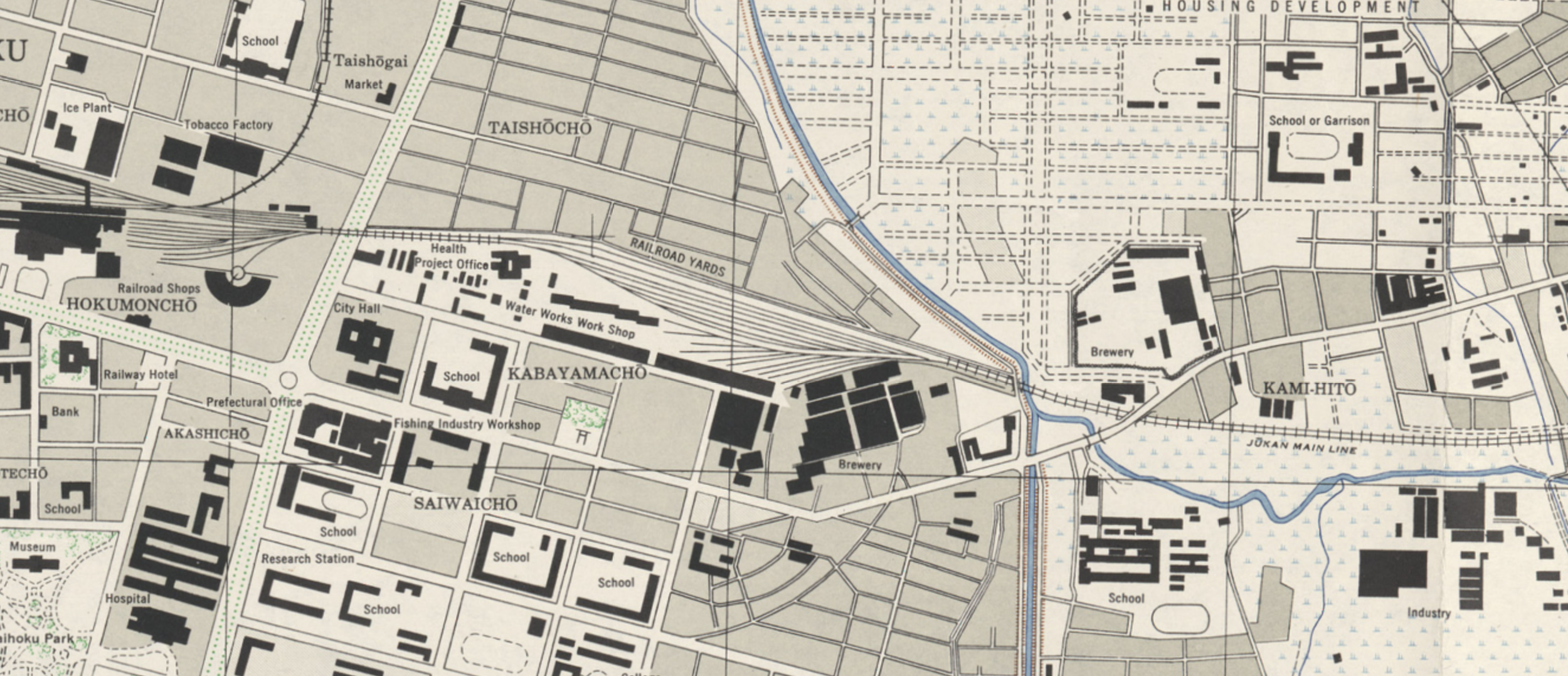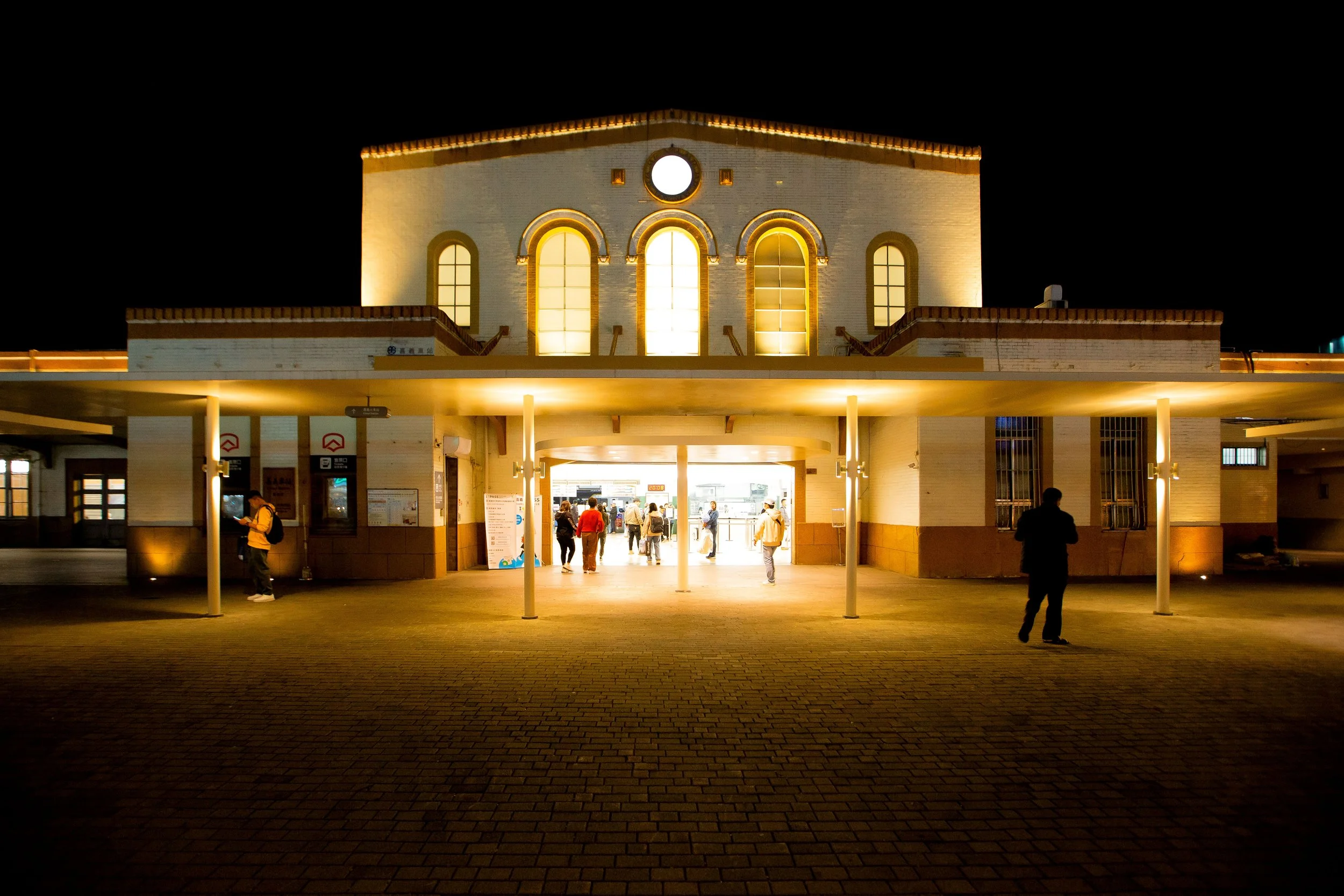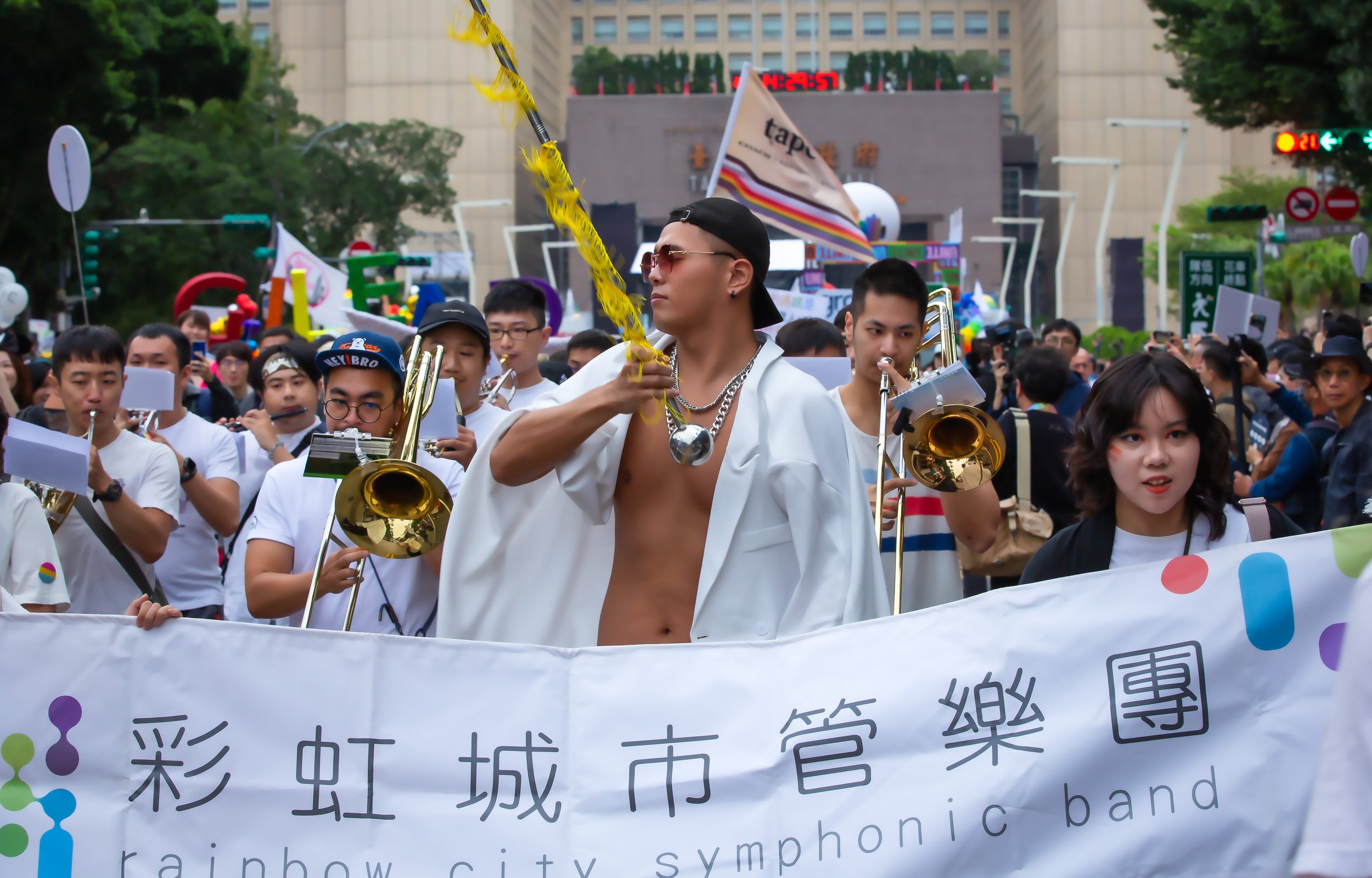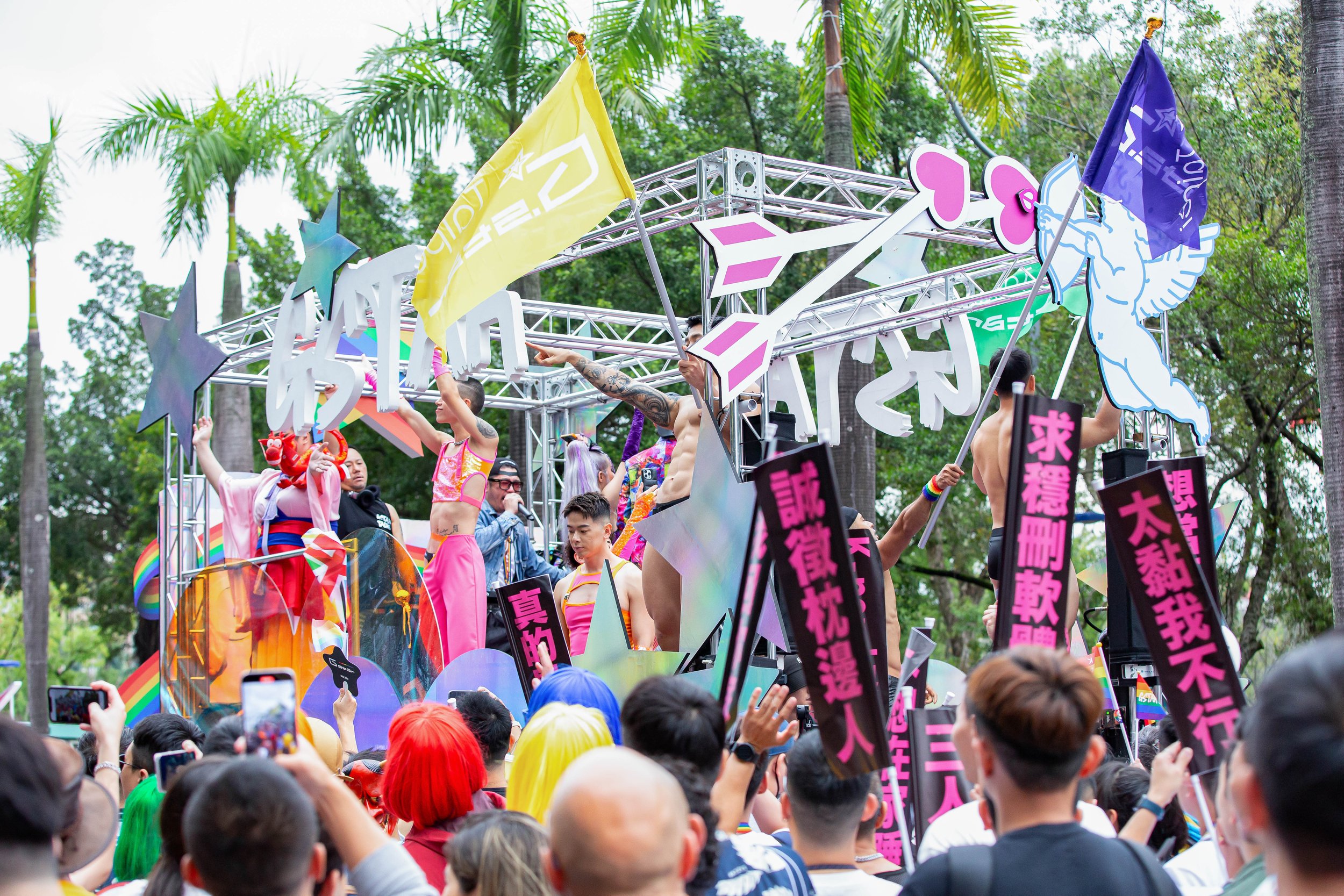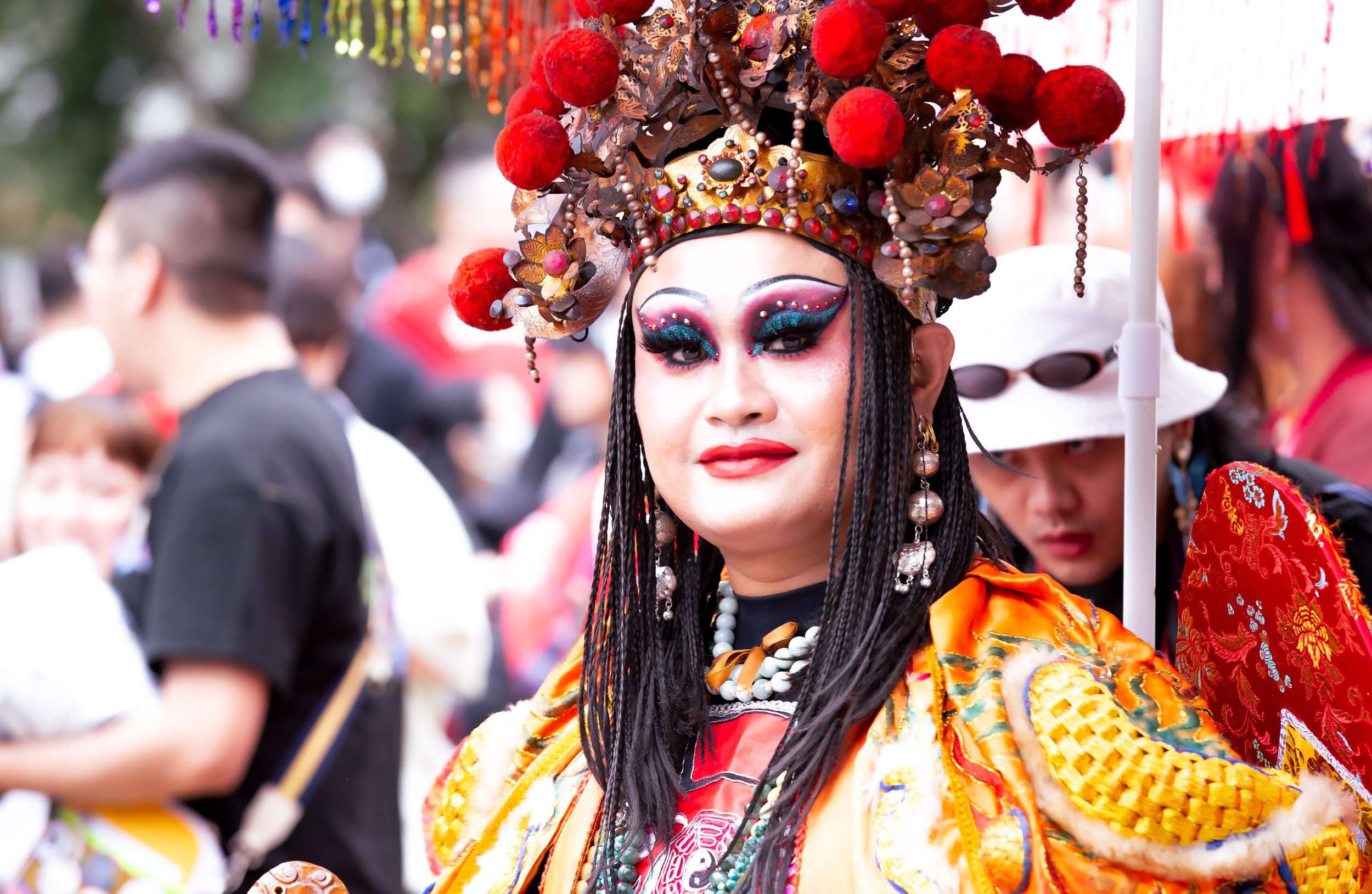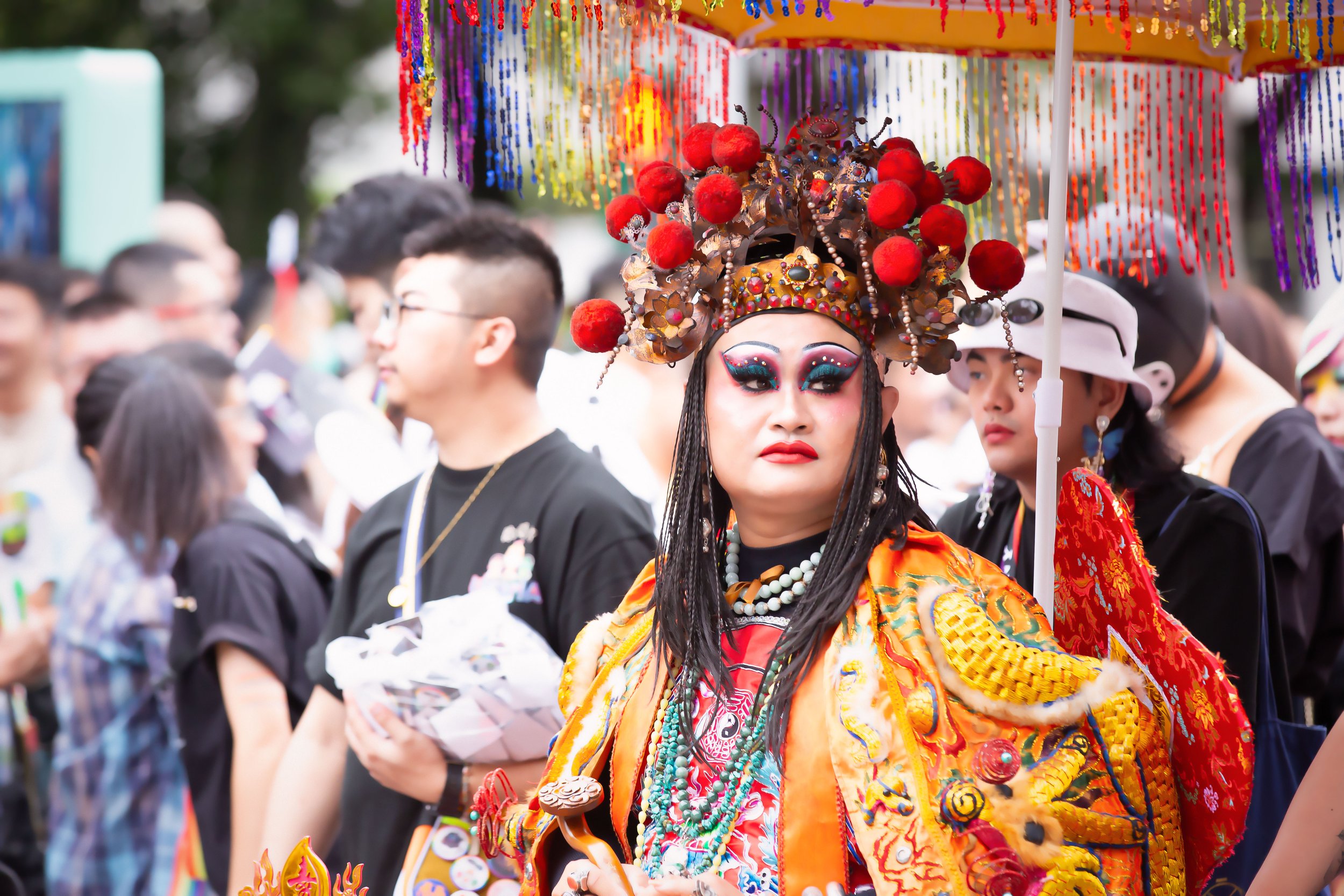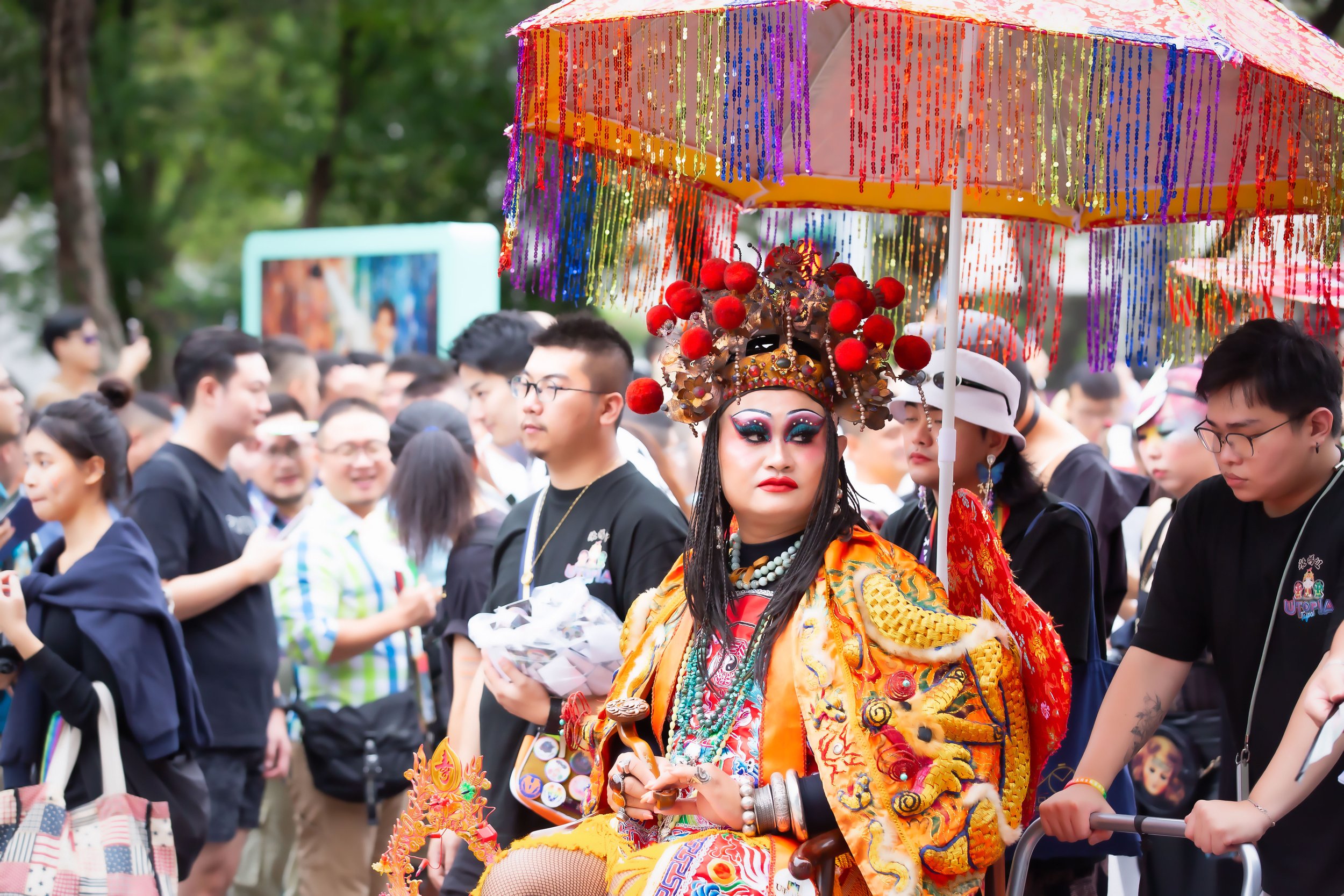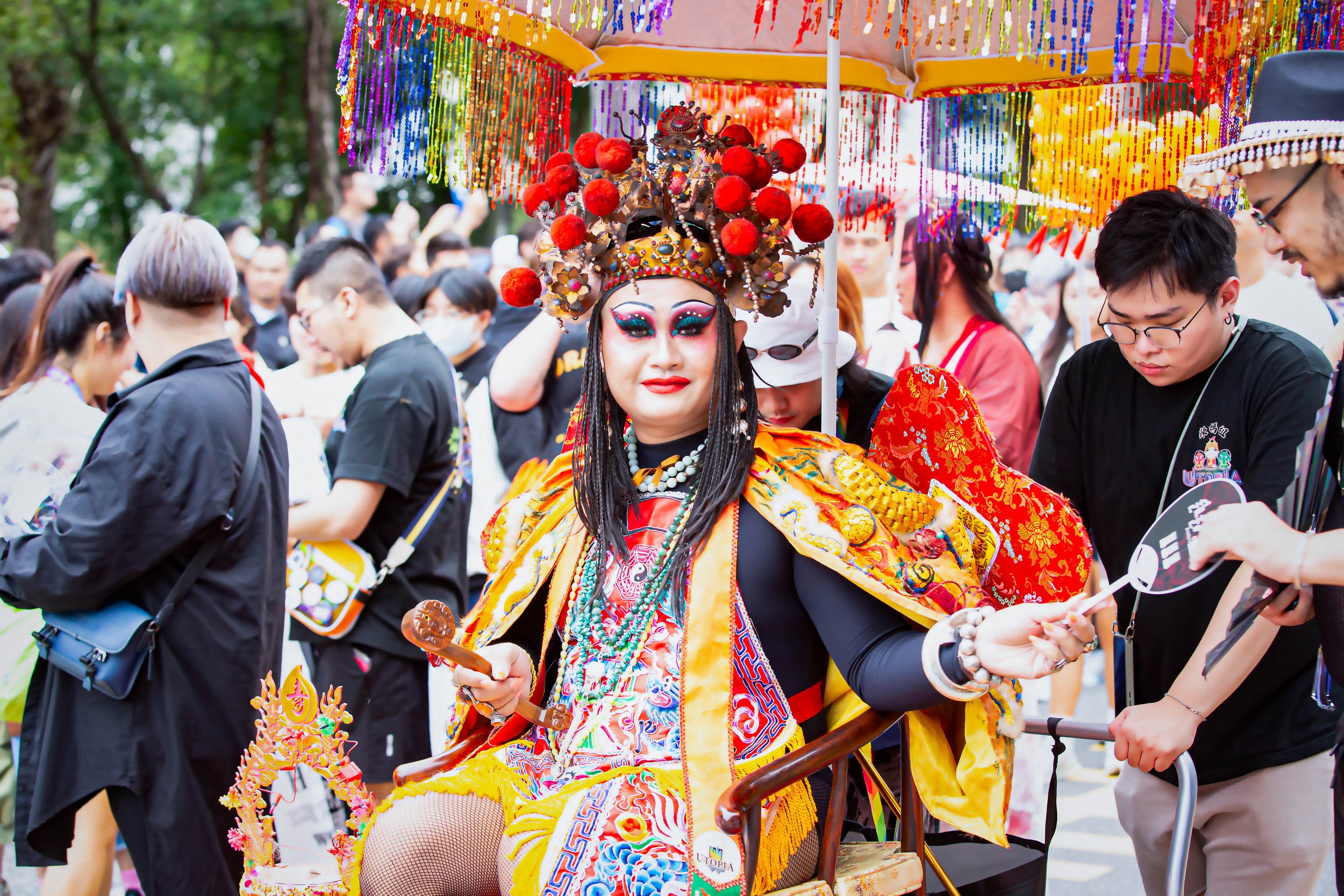While planning an eight-day long trip to Japan’s southern island of Kyushu, I was quite ambitious and placed a large number of destinations on a customized Google Map. Prior to our departure, I was fully aware that it was highly unlikely that we’d have enough time to visit them all, but having options and backup destinations is always an important consideration when traveling. With only a few days in Fukuoka before setting off to other parts of the island, I had to prioritize and carefully plan where we’d visit within the city, especially since we planned two excursions out of the city to the Hakozaki Shrine (筥崎宮) and the Dazaifu Shrine (太宰府天満宮), both of which would take about half a day to visit. We’d eventually have to return to the city after our tour around the island, but our time on that day was reserved solely for taking part in the Fukuoka Cherry Blossom Festival.
Suffice to say, time was short and there is way to much to see and do in the beautiful port city.
A few days prior to our departure, we became a little concerned as the forecast was looking quite dire for pretty much the entire duration of our trip. With rain forecast for every day that we’d be in the country, it seemed like some of our schedule might have to be altered, depending on how much rain was coming down. Fortunately, even though it did rain, it wasn’t that bad, and we were able to visit almost all of the spots that were high up on our list. Sadly, we did miss out on the opportunity to visit the city’s famed Kushida Shrine (櫛田神社) due to the weather, but in its stead, we paid a visit to another of Fukuoka’s most important places of worship, the Sumiyoshi Shrine (住吉神社).
There are, of course, a number of reasons why travelers visiting Fukuoka should pay the Sumiyoshi Shrine a visit, and now that I’ve have, I can confidently say that an excursion to the shrine should be high atop the list of Fukuoka’s tourist destinations. What I do find unfortunate, though, is that there is very little written about this important shrine.
I had my own reasons for wanting to visit the shine while planning the trip, but, admittedly, I had only listed it as a backup destination. In retrospect, we would have really missed out if we didn’t end up visiting the shrine, so I’m thankful to say that if it weren’t for the rain, we might not have had the opportunity to go.
So, before I start introducing the shrine, let me list a few of the reasons why I think anyone visiting the area should make visiting the Sumiyoshi Shrine a priority:
The shrine is what is known as an ‘ichinomiya’ (一の宮 / いちのみや) or the ‘highest-ranking’ shrine in Fukuoka Prefecture, which makes it one of the most important places of worship in town.
While the shrine may look quite new, don’t let it’s well-maintained appearance deceive you, it’s about 1800 years old.
Given its age, it is considered the ‘first’ and also one of the ‘three most important’ of the more-than two-thousand Sumiyoshi Shrines scattered throughout the country.
Predating the arrival of Buddhism in Japan, the shrine spawned an architectural style of its own, known as Sumiyoshi-zukuri, which is one of Japan’s oldest styles of architectural design.
The shrine is listed as one of Japan’s Protected National Treasures (国指定重要文化財).
Occupying about 2.6 hectares of land within the downtown core of Fukuoka, the shrine is like an oasis within the modern city where anyone who visits can enjoy some peace and quiet as well as some refuge from the rain.
The shrine is one of Fukuoka’s most popular places to get married. You may get to experience a traditional marriage ceremony taking place during your visit.
If you’re into theater, the shrine plays host to Kyushu’s most important ‘Noh Theater’ (能 / のう) venue.
If you plan your visit well, you may get to see some sumo wrestling competitions taking place at the shrine, which acts as one of the most important shrines with regard to the traditional sport.
Of course, these are only some of the reasons why tourists should visit the Sumiyoshi Shrine, and if you have the opportunity, I’m sure you could add some more of your own to the list. Sure, it might just seem like another one of Japan’s high-ranking shrines, and there are a lot of shrines like that, but this one tends to be quite busy, with a lot of events and activities, so a visit should prove to be a rewarding cultural experience.
Sumiyoshi Shrine (住吉神社 / すみよしじんじゃ)
For any of you who are interested in anything related to Japan, there are two books that you absolutely have to be aware of: The Kojiki (古事記 / こじき), and the Nihon Shoki (日本書紀 / にほんしょき) - known in English as the ‘Records of Ancient Matters’ and the ‘Chronicles of Japan’ respectively. Regarded as the oldest known written records of Japanese history - part historical record, part myths and legends - the books are essentially a historical account of the origin of the Japanese nation, the imperial line of succession and the deities worshiped in the country.
Even for those those of you who are interested in Japanese pop culture, be it anime, comics, music or film, these two books form a basis for a large amount of the stories that you’ll enjoy.
The Kojiki, the oldest of the two is dated back to about the eighth century, and within its records you’ll find mention of an ‘ichinomiya in Chikuzen Province’ (筑前國一之宮) known as the Sumiyoshi Shrine. Just to give you a bit of an idea about how old this shrine is, it basically predates every written record you’ll find in Japan. This, however, is where things become a little complicated as the precise date of the establishment of the shrine is relatively unclear. The earliest known record of the shrine dates back to the year 737, the ninth year of the Tenpyo era (天平9年).
Note: Chikuzen Province was essentially the geographic area that we refer to as Fukuoka Prefecture today. It was once a feudal domain controlled by the Kuroda clan (黒田氏), but was renamed in the 1870s during the Meiji Restoration, which converted Japan’s provinces into prefectures. The reforms also took away power of the daimyos (大名), or the feudal lords who controlled areas of the country, but it’s interesting to note that the Kuroda Clan fought alongside the Imperial family during the Boshin War. This might be one of the reasons why it’s not uncommon to come across reference to the area’s historic name of Chikuzen in the city today.
Links: Chikuzen Province | Fukuoka Domain | Boshin War | Abolition of the han system
Records of the shrine’s existence account for about 1300 years, but the shrine’s official literature claims that it was established about 1800 years ago. To understand these claims, we have to take a look at the references in the Nihon Shoki that detail the events that led to the shrine coming into existence.
The topic I’m about to introduce is one that has been covered extensively over the years, with debate as to the verification of the historical evidence that any of these figures ever actually existed - whether or not any of it is true - but the records weave an important narrative about the history of Japan, the imperial family, and the power of the kami, which are essential for the propagation of Shintoism.
The story starts during the reign of Emperor Chuai (仲哀天皇 / ちゅうあいてんの), who it is said to have ruled between 192 and 200AD. Considered to have been the fourteenth Emperor of Japan, he was noted for having his capital in Kyushu (九州) rather than Yamato (大和国). The wife of Emperor Chuai was a shamaness, Empress Jingu (神功皇后 / じんぐうこうごう), is said to have been possessed by a supernatural force on the eve of a battle with a rival clan just outside of Fukuoka.
Insisting that the Emperor abandon his war with the rival clan, the supernatural force, which is interpreted as a kami, instead demanded that he take to the water and conquer the ancient Korean kingdoms of Silla, Goguryeo, and Baekje. Scorning that idea, the emperor continued with his battle plans, and ended up being killed in the process.
Having warned her husband to pay homage to the gods, his refusal to adhere to their will was considered the main reason for his untimely demise. Thus, the Empress Consort, who was pregnant with their son at the time, ascended the throne, and carried out the request to invade the Korean kingdoms.
According to legend, she prayed to the ‘Sumiyoshi Sanjin’ prior to setting sail, which assisted with the narrative that the expedition went quite smoothly thanks to the blessing of the gods.
The legends of Jingu’s ascension to the throne, her status as a shaman, and the conquest of the Korean kingdoms is explained quite well in the articles below, as are the questions to whether they are actually based on historic fact. Nevertheless, the key take away of the legends are that Jingu’s faith in the Sumiyoshi Sanjin propelled her to greatness. This is why she is said to have had a hand in the construction of the three major Sumiyoshi Shrines, in addition to being enshrined as a deity within each of them.
Link: Jingu c. 201–269 (Encyclopedia) | Empress Jingū (Wiki)
Legend has it that upon her ‘triumphant’ return from Korea, Empress Jingu had a shrine constructed to honor the Sumiyoshi Sanjin in Fukuoka, the port for which they set off on their conquest. Whether or not we choose to take the legends as fact, which have become controversial in recent years, the rule of Empress Jingu is estimated to have been between 201 and 269, and the construction of the shrine would have taken place at some point between then.
Regardless of the veracity of the legends that led up to the establishment of the shrine, it is considered to be the ‘first’ shrine in Japan dedicated to the Sumiyoshi Sanjin (住吉三神), and today it is one of the ‘Three Great Sumiyoshi Shrines’ (日本三大住吉) alongside the Sumiyoshi Grand Shrine (住吉大社) in Osaka (大阪市) and the Sumiyoshi Shrine (住吉神社) in Shimonoseki City (下関市).
So even though we’ve established that the records of the shrine’s origin are somewhat questionable as they’re mostly based on legend, if we keep in mind that Fukuoka’s Sumiyoshi Shrine was the first, if we compare it to Osaka’s Grand Sumiyoshi Shrine, which was established in 211, we can more or less come to the conclusion that it was constructed a few years earlier.
Sumiyoshi Sanjin (住吉三神 / すみよしさんじん)
Regarded as protector deities of the ‘sea and sailing’, the ‘Sumiyoshi Sanjin’, who are often also referred to as the ‘Sumiyoshi Daijin’ (住吉大神 / すみよしだいじん), are important figures within Shintoism, with legends of their origin told in the Nihon Shoki and Kojiki.
Reflecting Fukuoka’s long history as one of Kyushu’s most important trading ports, the Sumiyoshi Sanjin are highly regarded for their ability to protect seafarers in addition to having close ties to poetry, performing arts, sumo wrestling, love, the safe delivery of babies, etc.
As the ‘first’ of over two-thousand shrines across the country dedicated to these deities, Fukuoka’s Sumiyoshi Shrine is one of the most important shrines in the country dedicated in their honor. With tales of their exploits told in the mythological tales told in the Kojiki and the Nihon Shoki, the three kami are said to have been born together (with a number of other kami) when Izanagi (伊邪那岐 / イザナキ), the god of creation, performed a purification ceremony after returning from Yomi (黄泉 / よみ), the Japanese version of Hades, or the land of the dead.
According to the myths told in the two books mentioned above, the three Sumiyoshi deities are actually the three main stars in the belt of the constellation Orion, and their relationship with seafaring likely originates from the importance of the constellation in ancient maritime navigation.
The Sumiyoshi Sanjin are as follows:
Sokotsutsu (底筒男命 / そこつつのおのみこと)
Nakatsutsu (中筒男命 / なかつつのおのみこと)
Uwatsutsu (表筒男命 / うわつつのおのみこと)
One thing you’ll want to note about the Sumiyoshi Sanjin are the characters ‘soko’ (底 / そこ), ‘naka’ (中 / なか), and ‘uwa’ (表 / うわ) in their names, which are translated as ‘bottom’, ‘middle’ and ‘surface,’ which is interpreted as each of the kami representing the various depths of the ocean.
Link: Sumiyoshi sanjin (Wiki)
Accompanying the Sumiyoshi Sanjin in the Main Shrine are another two important figures, the first being the Goddess of the sun and the universe, one of Shinto’s most important kami, Amaterasu Ōmikami (天照大御神 / あまてらす おおかみ). The second figure, also a female deity, is the former Empress of Japan, Empress Jingu (神功皇后 / じんぐうこうごう) mentioned above, who, according to legend is the mother of Emperor Ōjin (應神天皇 / おうじんてんのう), a figure who would later be deified as Hachiman (八幡神 / はちまんしん), one of Japan’s most important religious figures.
Note: While it may be confusing for the average visitor, Jingu is enshrined within Sumiyoshi Shrines across Japan with the title Okinagatarashihime no Mikoto (気長足姫尊 / おきながたらしひめ) rather than using her original name.
Located deep within the Main Hall (本殿) are the ‘shintai’ (神体 / しんたい) for each of the five kami that are worshiped at the shrine - for those who are unaware, ‘shintai’ basically translates as the ‘sacred body of a kami’, but unlike in other places of worship around Asia, doesn’t feature a statue. Instead, the shintai is essentially a repository that most often appears in the form of an object like a mirror. The ‘Main Hall’ exists to ‘protect’ and ‘house’ the repository, and as such is off-limits to the general public.
Visitors to the Sumiyoshi Shrine are encouraged to approach the Worship Hall (拜殿), clap their hands, and announce to the kami that they have arrived, but that’s the closest you’ll be able to get to seeing what’s inside.
Architectural Design
While planning my trip to Fukuoka, one of the things that initially drew me to the Sumiyoshi Shrine were the striking similarities in architectural design of the Main Hall of the shrine to the Taoyuan Shinto Shrine here in Taiwan. Within a few minutes after my arrival however, I quickly discovered that the photos I saw prior to my arrival were somewhat misleading.
The architectural design of Fukuoka’s Sumiyoshi Shrine, like the Sumiyoshi Grand Shrine (住吉大社 / すみよしたいしゃ) in Osaka is one that stands out from all of the other shrines you’ll find in Japan with a style that is entirely unique to this branch of Shintoism.
According to historic records, Fukuoka’s Sumiyoshi Shrine as we know it today dates back to around 737 (天平9年), and is thought to be the birthplace of ‘Sumiyoshi-zukuri’ (住吉造 / すみよしづくり), one of Japan’s three major styles of architectural design (including Taisha-zukuri and Shinmei-zukuri) that predate the arrival and influence of Buddhism.
However, as I mentioned earlier, there is a bit of confusion as to whether the Grand Shrine, or this one was where the style originated. Nevertheless, there are estimates based on historic record that Sumiyoshi-style architectural design dates back to around the year 552, which means that it has been in use for around 1500 years.
That being said, despite the Sumiyoshi Shrine being a considerably aged place of worship, one of the important factors to keep in mind with this style of architectural design is that it adheres to the tradition of ‘shikinen sengu’ (神宮式年遷宮/じんぐうしきねんせんぐう), a ritual that provides for the constant renewal of its buildings. More importantly, as the article linked below explains, the ritual plays a “very important role by enabling the transfer of (our) technical skill and spirit to the next generation. This transfer maintains both our architectural heritage and over 1,000 years of artistic tradition involving the making of the divine treasures.”
Link: [Soul of Japan] Shikinen Sengu, the Ritual of Rebuilding and Renewal (Japan Forward)
The ritual is one that tends to vary between shrines, with some undergoing the process every eighteen to twenty years - In the case of the Sumiyoshi Shrine, the Hall of Worship (拜殿), which is off-limits to the general public, is rebuilt every twenty-five years. The most recent ritual was held in 2010, which means that the next time the process takes place should be in 2035.
It’s important to keep in mind however that only specific buildings within the shrine are rebuilt during this process, which means that the age of all of the other sections of the massive shrine vary. Obviously, as one of the most important places of worship in Fukuoka, the shrine is extremely well-kept, and when buildings reach a certain age, they’re rebuilt, so it goes without saying that you’re not going to encounter anything even remotely close to when the shrine was originally established.
Unfortunately, something that I’ve learned (the hard way) while researching historic Japanese buildings and places of worship over the years is that you’ll often encounter the text ‘date of construction unclear’ (建立年不明), which makes writing about these places difficult.
As I move on to introduce each of the important pieces of the shrine below, I’ll do my best to offer information about their age, but in some cases, I’m afraid it’s difficult to find anything reliable with regard to the age of these things given how often they’re refurbished - I’m going to provide a map of the shrine from the official website with translations as to each of its parts, but for brevity, I won’t be detailing every aspect of the 27,000㎡ shrine as it would take far too long, so I’ll only spend time on the most important aspects that visitors should pay the most attention to.
-
Main Section of the Shrine
Amatsu Shrine (天津神社 / あまつじんじゃ)
Visiting Path (參道 / さんどう)
Shrine Gates (鳥居 / とりい)
Sukunahikona Shrine (少彥名神社 / すくなひこなじんじゃ)
Purification Fountain (手水舍 /ちょうずや)
Diety Gate (神門 / しんもん)
Shrine Gift Shop (授与所 / じゅよじょ)
Administration Office (社務所 / しゃむしょ)
Main Hall (本殿 / ほんでん)
Auxiliary Shrines (船玉神社‧志賀神社‧人丸神社‧菅原神社)
Inari Shrine (荒熊‧白髭稲荷神社)
Sumo Bronze Statue (古代力士像)
Southern Section
Ebisu Shrine (惠比須神社 / えびすじんじゃ)
Ebisu Statue (恵比須神像)
Wedding Hall (神徳殿)
Noh Theater (能楽殿)
Sumo Ring (相撲場)
The Visiting Path (參道 / さんどう)
The Visiting Path, otherwise known as the “sando” (さんどう) is an important part of the design of any Shinto Shrine and is essentially just a long pathway that leads visitors to the shrine. While these paths serve a functional purpose, they are also quite symbolic in that the “road” is the path that one takes on the road to spiritual purification. Shintoism itself is literally translated as the “Pathway to the Gods” (神道), so having a physical pathway that leads the worshiper from the realm of the profane to that of the sacred is quite important.
At the entrance to the path, you’ll find the first of the two Shrine Gates (鳥居 / とりい), marking the space where you start your journey into the sacred space of the shrine. Along the path you’ll find a number of Stone Lanterns (石燈籠 / しゃむしょ) lined symmetrically on both sides at various intervals.
During my visit, I took a look at the dates that were etched on the lanterns, with the vast majority of them dating back to either the Meiji (明治), Taisho (大正) or Showa eras (昭和), which spans a period between 1868 - 1989. After dark, the Visiting Path is quite dark, so electric lights have been added recently to offer visitors a bit of light at night, given that the old stone lanterns aren’t used in the same way as they used to be.
One of the most serene aspects of the shrine is that it is like an oasis within the massive city, which has a population of about five and a half million residents. As the Visiting Path is probably going to be your first impression of the shrine, you’re likely to be amazed at the beautiful trees that line both sides of the path, completely obscuring the sky.
Nearing the end of the path as you approach the Deity Gate and the Purification Fountain, you’ll find a stone pole with the text: “皇族下乗” etched into the stone. The stone pole is quite interesting as it marks the spot where members of the royal family are required to get out of their vehicle before entering the shrine. Meanwhile, for the rest of us common folk, if we’re in a vehicle, we have to get out just before the Main Shrine Gate at the entrance to the Visiting Path.
The Purification Fountain (手水舍 / ちょうずしゃ)
Located to the left of the second shrine gate, you’ll find what is known as the Purification Fountain, which is an essential addition to any Shinto Shrine. Similar to the Visiting Path, the fountain is sure to appear at every shrine as it marks another important philosophical aspect to Shintoism, which is referred to as “hare and ke” (ハレとケ), or the "sacred-profane dichotomy." Like the Visiting Path, which marks the journey from the sacred to the profane, it is important for visitors who are crossing the barrier into the sacred realm to do so in the cleanliest possible manner by performing a symbolic purification ceremony at the chozuya (ちょうずしゃ) or temizuya (てみずしゃ) provided.
Following with the color scheme of the rest of the shrine, the fountain is covered with a beautiful kirizuma-zukuri-style (切妻造 / きりづまづくり) roof, propped up by four red pillars, which are held in place by the cement that makes up the base of the fountain. The shape of the roof is likened to that of an open book that is placed face down with a high arch and two sides that slope down.
To purify yourself you should follow these steps:
Pick up a ladle with your right hand.
Scoop some water from the fountain
Purify the left hand.
Purify the right hand.
Pour some water in your left hand and put it in your mouth.
Bend over and (cover your mouth as you) spit the water on the ground.
Purify the handle of the ladle and then lay the dipper face down for the next person to use.
Link: How to Perform the “Temizu” Ritual (Youtube)
Stone Guardians (狛犬 / こまいぬ)
As you pass through the second Shrine Gate toward the entrance to the shrine, you’ll find the first two of the four stone guardians at the shrine. The famed ‘Lion-Dogs’ are prominent features of any Shinto Shrine and are historically related to the stone lions that act as temple guardians at other temples across Asia. Known in Japan as ‘komainu’ (狛犬 / こまいぬ), their original name translates literally as “Korean Dog” (高麗犬), referring to the ancient Korean Kingdom of “Koguryo” (高麗國), where it is thought that the tradition was passed on to Japan.
No, that’s not an ethnic slur, it’s just a literal translation.
Although there can be exceptions to the rule, these stone guardians typically appear as a pair and are placed on either side of a visiting path or at the entrance to a shrine. Most often appearing as a male and female, they are only distinguishable only by their facial expressions, with the male “a-gyo” (阿型) having an open mouth and the female “un-gyo” (吽形) having a closed mouth.
Link: Komainu Lion Dogs (Japan Visitor)
The set of stone guardians outside of the main gate are most noticeably the oldest of the two sets at the shrine, dating back to 1911 (明治44年), but if you’re looking for the date they were constructed, it might be a little difficult with all the green moss growing on them. The second set of stone-guardians are located just outside of the Main Hall (拜殿), and unlike the first set, are meant to be much more frightening. The second set of Lion-Dogs have massive muscles, like a Sumo Wrestler, and are much newer, dating back to 1964 (昭和39年).
Deity Gate (神門 / しんもん)
I’m not personally a big fan of the translation ‘Deity Gate,’ but in this case, it’s the most commonly used translation for what the Japanese refer to as a ‘Shinmon’ (神門 / しんもん). The gate is essentially the Shinto version of the Sanmon (山門 / 三門 / さんもん) that you’ll find at Buddhist temples. As part of the Buddhist influence on the architecture of Japan’s places of worship, the gate would have been a later addition to the shrine, although the date of its construction isn’t listed by the shrine.
The gate was constructed in the ‘Zuijinmon’ (随神門 / ずいしんもん) style, featuring three entrances, with ‘Door Gods’ (門神), known as ’Kadomori-no-kami’ (門守の神) on either side of the middle door, guarding the shrine. Although they are somewhat obscured, you’ll notice that they’re both well-dressed figures, who are holding bows and arrows with the figure on the left known as Yadaijin (矢大臣) while the one on the right is Sadajin (左大臣).
Like the Purification Fountain to the left, the Deity Gate features a kirizuma-style (切妻造) roof, which is a two-sided sloping gable roof. On the front side of the gate, the roof extends well beyond the entrance, while on the rear-side it’s not as long. The middle entrance in the shrine features a bronze plaque with the words ‘Sumiyoshi Shrine’ (住吉宮), which for those of you with a keen eye will notice that the Kanji for ‘miya’ (宮 / みや) is used instead of ‘jinja’ (神社 / じんじゃ).
Administration Office (社務所 / しゃむしょ)
As you enter the gate to the shrine, you’ll see the Main Hall directly in front of you while to your direct left, you’ll find the Shrine’s Administration Office, known in Japanese as a ‘shamusho’ (社務所 / しゃむしょ).
Within the building, the shrine’s priests, priestesses, and other shrine personnel rest when they are not performing their sacred duties. Given that it is a large building, it is also used as a space to hold lectures, or for anyone who has a special request for prayers or rites.
In some cases, the Administration Office also features a ‘Public Counter’ (授与所 / じゅよじょ) or a gift shop where visitors can receive (purchase) Shrine branded tokens and amulets. At the Sumiyoshi Shrine though, the Administration Office and the ‘Public Counter’ are separated, with the counter located to the direct right of the Deity Gate in a building of its own.
Obviously, given that this building is an administration area and resting space, it’s not one where tourists are permitted to enter. The shrine doesn’t offer much information about the date of the building’s construction, but it does appear to be relatively new.
The building is constructed of wood, and features a beautiful roof. One of the most architecturally significant aspects of the building, which contributes to the beauty of the roof, is the addition of a covered-front porch, known as a karahafu door (唐破風). This particular style of design is indicative of Japanese architecture dating back to the Heian Period (平安時代). These so-called ‘porches’, extend from the front of the building and have pillars holding up a section of the roof that connects to the rest of the building, but at the same time is structurally separate from the rest of the building. This style of design is a common architectural characteristic found in Japanese castles, temples, and shrines, and makes the building stand out considerably more thanks to its addition.
Main Hall (本殿 / ほんでん)
The Main Hall, which is the main attraction of the shrine for most visitors is probably the oldest part of the shrine, and is where I’ll spend the most time describing the architectural design of the building. The Main Hall was reconstructed with a donation of two-thousand pieces of silver from the Daimyo (大名) of Chikuzen Province (筑前国), Kuroda Nagamasa (黑田長政 / くろだ ながまさ) in 1623 (元和9年).
Coincidentally, the Main Hall was celebrating its four hundredth anniversary during my visit, but as mentioned above, it looks quite new given that it is fixed up every twenty-five years. That being said, as a National-Level Protected Cultural Property (国指定重要文化財), the Main Hall is currently the oldest living example of ‘Sumiyoshi-style’ of architectural design, predating the Sumiyoshi Grand Shrine in Osaka, which was reconstructed in 1810.
If (like myself prior to writing this article) you didn’t know much about Sumiyoshi-style design, you’d be forgiven if you thought the building was more or less the same as a typical Hall of Worship (拜殿 / はいでん) combined together with a Main Hall (本殿 / ほんでん). Looking at the building from the front, it does appear to like the traditional Hall of Worship, known in Japan as the ‘haiden’ (はいでん), while the rear section, looks like a ‘honden’ (ほんでん).
Some of the confusion as to what’s going on here is likely because for the average visitor, you’re only permitted to approach the front section of the Hall of Worship to announce your arrival to the kami, and while you’re there, you can check out what’s inside, but for photographers like myself, you’re not permitted to take photos of the interior of the building.
Similarly, the rear section, which is the most indicative aspect of Sumiyoshi-style architecture is completely obscured by a high fence, which is unfortunate, but also necessary given its historic importance.
The front section of the building - which as I stated earlier architecturally resembles one of the last remaining Shinto Shrines here in Taiwan from the Japanese Colonial-era - features a worship room with wings connected on both the eastern and the western sides. Save for the concrete base that elevates the building off of the ground, the front section was constructed primarily with wood (likely cypress), and was constructed with a genius network of pillars and trusses in the ceiling that work together to support the weight of the roof, which extends well-beyond the base of the building.
Constructed using the ubiquitous irimoya-zukuri (入母造 / いりもやづくり) style, the front section of the building features a high sloping kirizuma-style (切妻造) roof, while both of the wings on the left and right join together with their own similarly-designed roofs to create what appears to be a dual-layered roof. One of the benefits of having the wings on either side of the building when it comes to the main roof is that they allow for cross beams to extend beyond the main section and support the much larger roof, which extends well-beyond the ‘moya’ (母屋), or the base of the building. Having them there basically means that the building requires fewer pillars within the floor space of the main building, allowing for a much more open space.
That being said, the floor space within the front section is surprisingly a lot smaller than you might expect when you’re looking at the building from the front, which is one of the design characteristics of Sumiyoshi-style architecture most people don’t understand. Thus, instead of having a traditional ‘haiden’ and ‘honden’, in this case there is only a ‘honden’ (本殿), which is split into two sections known as the ‘nave’ (gejin / 外陣 / げじん) and the ‘sanctuary’ (naijin / 内陣 / ないじん).
The front section, or the ‘nave’, essentially plays a similar role as the ‘Deity Gate’ that you have to enter to reach the interior of the shrine space in that it acts as an entrance with a high ‘mizugaki’ (瑞垣 /みずがき) fence that surrounds the other three sides of the building. Unlike the Deity Gate, however, there is a bit of floor space in the nave that allows for ceremonies to be held within.
At the rear, you’ll find the rectangular-shaped sanctuary, which is connected directly to the roof of the nave. The rear building is elevated higher off of the ground with a set of stairs that priests walk up in order to reach the inner sanctum. The roof of the building was constructed using the ‘V’ shaped tsumairi-zukuri (妻入造 / きりづまづくり). Facing in the opposite direction of the front part of the roof, there are some 3D-like geometric shapes taking place with the combination of the two roofs, but you can really only see what’s happening in the rear if you walk around to the other sides of the building to check it out.
While the shape of the roof is quite simple, it is decorated with katsuogi (鰹木/かつおぎ) and chigi (千木 / ちぎ) ornaments. To the naked eye, they may just seem like unimportant decorations, but they have traditionally been used to differentiate Shinto Shrines from Buddhist Temples in Japan as well as indicating the ‘kami’ that are enshrined within.
The katsuogi are the long timber-like pieces of wood that rest atop the flat base of the roof. An even number of them indicates that a female divinity resides within the building, while an odd number signifies a male. In this case, there are three of them, which indicates that the kami enshrined within are male. Likewise the ‘chigi’ can be cut either horizontally or vertically, known as uchi-sogi (内削ぎ) and soto-sogi (外削ぎ), respectively. How they’re cut is another way to identify the kami, so It should then be no surprise that the ‘chigi’ at this shrine are cut vertically in the ‘uchi-soto’ style as the katsuogi mentioned above already indicates a male divinity.
Finally, the Main Hall, as with the Deity Gate are painted with a beautiful combination of vermilion and white, a color scheme which for a lot of Japanese easily identifies a Sumiyoshi Shrine, however, as you’ll notice below, one of the largest auxiliary shrines located on the grounds, the Inari Shrine, is also known for its similar color scheme, which matches it well with the main shrine.
Auxiliary Shrines (攝社)
As the ‘ichinomiya’ (一の宮 / いちのみや) of Fukuoka Prefecture, the Sumiyoshi Shrine is home to a number of smaller auxiliary shrines, known as ‘setsumatsusha’ (攝末社 / せつまつしゃ), located to the sides and the rear of the main shrine. The term ‘setsumatsusha’ is a conjunction of the terms ‘sessha’ (攝社 / せっしゃ) and ‘massha’ (末社 / まっしゃ), which refer to the miniature shrines you’ll often find located within a larger shrine. In most cases, the kami who are enshrined within these spaces share a relationship with those enshrined within the larger shrine space, and offer visitors a broader experience when visiting a shrine.
Link: setsumatsusha | 摂末社 (Wiki)
The Sumiyoshi Shrine is home to eight of these auxiliary shrines within the walls of sacred space of the shrine. Each of the shrines vary in size, but for the most part they are just mini versions of a larger shrine building and are elevated off of the ground on stone pedestals.
In this case, the kami enshrined within these smaller shrines are influential figures within Shintoism, but it’s important to remember that each of them are related to the Sumiyoshi Shrine in that they share a relation to the sea, protection, commerce, etc.
I’ve listed each of the shrines, starting with their names and then following with the kami enshrined within each of them. I’ll also link to the profile of each of them for those of you who are interested in learning more about them.
‘Sessha shrines’ (攝社)
Funadama Shrine (船玉神社 / ふなだまじんじゃ) - Sarutahiko (猿田彥)
Shiga Shrine (志賀神社 / しかじんじゃ) - Watatsumi (綿津見三神 / わたつみのかみ)
‘Massha shrines’ (末社)
Sukunahikona Shrine (少彥名神社 / すくなひこなじんじゃ) - Sukunahokona (少彥名 / すくなひこな)
Inari Shrine (稻荷神社 / いなりじんじゃ) - Ukanomitama (宇迦之御魂神 /うかのみたまのかみ)
Ebisu Shrine (惠比須神社 / えびすじんじゃ) - Kotoshiro-nushi-no-kami (事代主神 / ことしろぬしのかみ)
Tenmangu Shrine (天滿宮 / てんまんぐう) - Sugawara no Michizane (菅原道真 / すがわらのみちざね)
Hitomaru Shrine (人丸神社 / ひとまるじんじゃ) - Kakinomoto no Hitomaru (柿本人麿 / かきのもとのひとまろ)
Amatsu Shrine (天津神社 / あまつじんじゃ) - Izanagi (伊奘諾尊 / いさなきのみこと)
Of specific note, the Inari Shrine is the largest of these auxiliary shrines within the main shrine grounds, located directly to the left of the Main Hall. As is the case with almost every Inari Shrine, it features beautiful red shrine gates and the iconic stone fox guardians.
While the Inari Shrine is the largest auxiliary structure the Amatsu Shrine, on the other hand is the only auxiliary shrines located outside of the main shrine space, and also has the largest amount of space reserved for it. Located next to the river, visitors will likely notice it across the street from the first of the shrine gates. Given it’s location, most people are unlikely to realize that an important part of the Sumiyoshi Shrine.
Ancient Sumo Wrestler Statue (古代力士像)
Located to the right of the Main Hall, you’ll find a statue of an opposing figure, which is known as the ‘Ancient Sumo Wrestler.’ Visitors might be a little confused as to why there is a statue of a sumo wrestler at such an important shrine, but once again, according to legends, there’s a purpose.
It is said that when Empress Jingu returned from the conquest of the Korean kingdoms (mentioned above), she dedicated Sumo Wrestling (相撲/すもう) and Yabusame (流鏑馬 /やぶさめ), the Japanese art of mounted archery, to the Sumiyoshi Sanjin. Over the years, the Sumiyoshi Sanjin have become regarded as the patron kami of poetry, the performing arts, and sumo wrestling, which is why you’ll find a Sumo Wrestling Ring and one of Kyushu’s most important Noh Theater venues within the precinct.
Naturally, as an important place of worship for sumo, the shrine plays host to an annual sumo tournament in October and this is also why whenever a wrestler is crowned as the Yokozuna champion (橫綱 / よこづな), he is sure to pay the shrine a visit to pay respect.
The statue of the ancient sumo wrestler was crafted by local artists Nobutaka Nakamura (中村信喬) and Hiromine Nakamura (中村弘峰) in 2013. The statue is a large standing figure, and it is said that if you press your hands against his, you’ll be able to absorb some of his strength.
Getting There
Address: 3-1-51, Sumiyoshi, Hakata-ku, Fukuoka (福岡縣福岡市博多區住吉3-1-51)
GPS: 23.922220, 120.682080
MAPCODE: 13289837
Conveniently located a short distance from the Hakata Railway Station, visiting the Sumiyoshi Shrine, which is like a lush oasis within the busy downtown area of Fukuoka, is quite simple.
If you’re walking from the Hakata Railway Station, which is also serviced by the Fukuoka Subway System, you’ll want to exit the station from (or near) the West 21 Exit (西21出口), and walk straight down Sumiyoshi Dori for about two blocks until you reach the shrine. The walk is quite straight-forward, so it’s not likely that you’ll get lost.
That being said, for the best experience, I recommend entering the shrine through it’s front entrance rather than walking through the parking lot at the rear, so you’ll want to keep walking straight until you see the signs that send you in the direction of the shrine.
Bus
The closest bus stop to the shrine is the Sumiyoshi Bus Stop (住吉站), which is located a short distance from the front entrance, or the southern entrance to the shrine. If you prefer to take a bus, the Sumiyoshi Bus Stop is serviced by the following routes: #5, #9, #10, #11, #15, #16, #17, #19, #44, #50, #58, #63, #65, #88, #105, #214, #L
For the timetable of bus routes, I recommend you check out the Nishitetsu Website (西鉄バス), however, one of the easiest methods to map out your route would be to input your location into Google Maps, and then your destination, which will give you a number of options, including the buses that you’ll need to take to get there.
Hours: Open daily from 09:00 - 17:00
Website: Sumiyoshi Shrine (Japanese)
I ended up visiting the Sumiyoshi Shrine on one of the last days of my trip to Fukuoka, but I’m glad I didn’t miss out on this one - The expansive shrine is like a tropical forest within the city and is a peaceful refuge from the business of Kyushu’s largest metropolitan area. Located a short walk away from one of the country’s busiest transportation hubs, you’d be excused for completely forgetting where you were while exploring this natural space.
As one of Fukuoka’s most important shrines, it is an important place of worship for the people in the city, as well as acting as one of the head shrines of the more than two-thousand shrines dedicated to the Sumiyoshi Deities in Japan - so if you’re in the city for any length of time, I recommend stopping by the shrine for a quick visit, and then of course, you should head over to Hakata Station to enjoy some of the city’s famous ramen in one of the many restaurants on the Hakata Noodle Street!
References
住吉神社 (神社網頁)
住吉神社 (福岡市経済観光文化局)
住吉神社 (日文) | 住吉神社 (中文) | Sumiyoshi Shrine (Wiki)
住吉三神 (日文) | 住吉三神 (中文) | Sumiyoshi sanjin (Wiki)
住吉神社の御朱印~筑前国一宮‧日本三大住吉 (御朱印のじかん)
最古老的住吉在福岡!博多住吉神社:一起摸摸七福神討吉利 (Japaholic)
Sumiyoshi Shrine: Traditional Architecture and Powerful Sumo (Japan Journeys)
Shrine of peace and nature, Sumiyoshi in Hakata, Fukuoka (Voyapon)
Hakata’s Sumiyoshi Shrine – The Oldest Shrine in Japan (Vegetarian’s Japan Guide)





